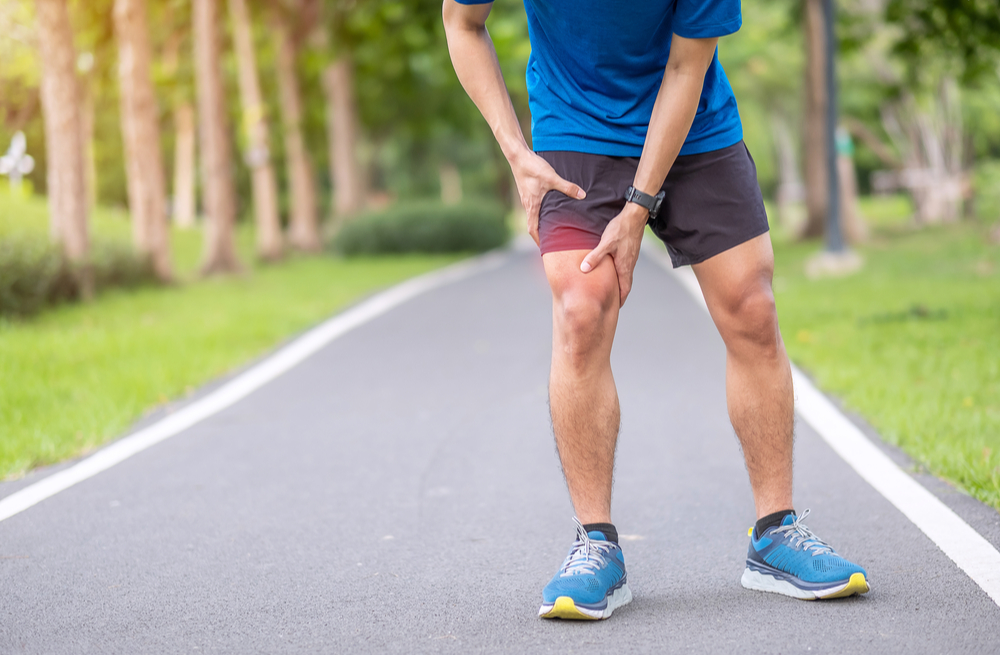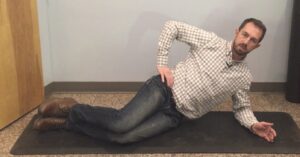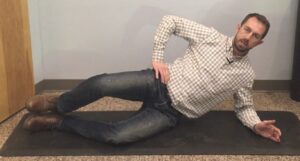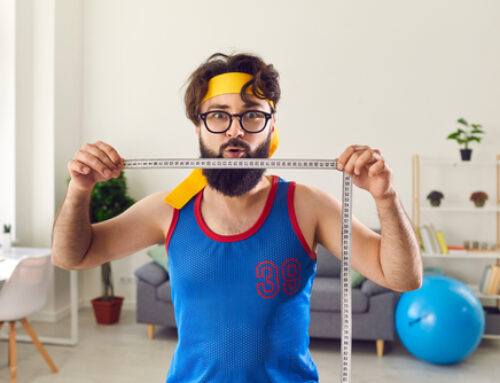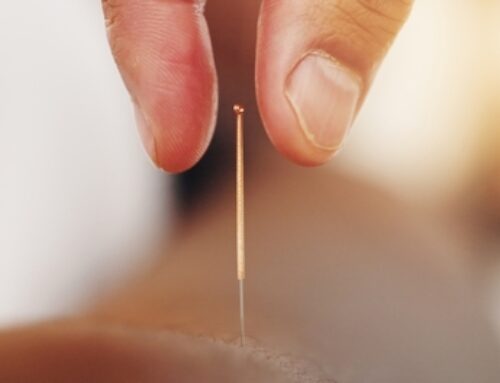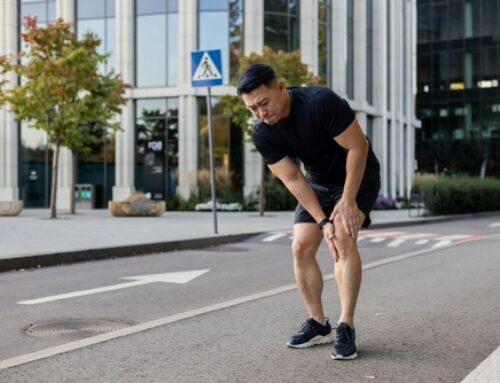Unless you have been a runner all your life, when you think of knee pain, you may not think about your IT Band (iliotibial band). But if you’re having pain on the outside of your knee, it’s quite possible that this connective tissue may be involved. The IT Band is located on the outside of your leg and connects your gluteus maximus to your knee. Its main function is to stabilize your knee when the leg is extending. IT Band Syndrome is common among those who are extending their knee often, like runners. If you ever see someone running down the street with a band-like brace right below their knee, they are likely using that band to support and relieve any knee pain or discomfort caused by their IT Band.
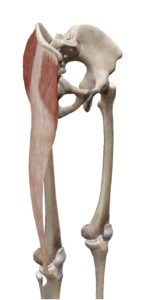 Increased activity and knee pain go together like peanut butter and jelly. The Iliotibial band is a frequent recipient of overuse stress during these extension activities. This blog post will provide an updated etiology of the best practice management for Iliotibial Band Syndrome (ITBS), including a crucial rehabilitation strategy that every athlete striving to get back to their sport should employ.
Increased activity and knee pain go together like peanut butter and jelly. The Iliotibial band is a frequent recipient of overuse stress during these extension activities. This blog post will provide an updated etiology of the best practice management for Iliotibial Band Syndrome (ITBS), including a crucial rehabilitation strategy that every athlete striving to get back to their sport should employ.
Historically, athletes would stretch, foam roll, ice, and rest to alleviate symptoms at the lateral knee. This treatment was based upon a false understanding of the etiology of ITBS. Earlier theories suggesting that ITB syndrome was a “friction syndrome” resulting in irritation to a distal bursa are wrong on two accounts – there is no bursa, and the distal band does not undergo friction-inducing movement.
This video will help to explain what causes ITBS and what home exercise protocols you can use to help get over this pain.
So what is causing ITBS?
Simply – hypertonicity or overdevelopment of the TFL and underutilization of the glutes predisposes patients to ITBS. This problem is common in runners; particularly during longer distances when increased knee flexion and adduction occur secondary to fatigue of the gluteus medius and maximus. This results in repetitive eccentric loading to the posterior fibers of the ITB. Put another way, when you fatigue the glutes enough, you will compensate with groin and IT band tension. This compensation pattern creates an imbalance of the hip and it increases pressure on the lateral knee. The knee is servant to the mechanics of the hip and foot; and research confirms that strengthening the glutes will correct this imbalance and reduce symptoms of ITBS. In fact, the vast majority of patients who incorporate hip abductor strengthening into their ITBS rehab will experience symptom resolution within six weeks. However, strengthening the hips without facilitating the TFL proves to be a challenge.
Unfortunately, most ITBS patients present with weakness in the gluteus medius and maximus on the affected side. Strengthening the glutes without overwhelming the TFL is key and new research has examined how to accomplish this goal. Researchers have evaluated a myriad of exercises that activate the gluteus muscles without activating the TFL. The following are some of the top exercises from that research project.
Dynamic Hip Rotator Stretch
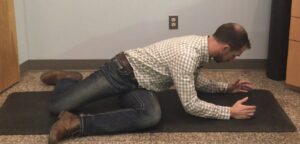
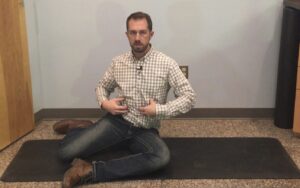
- Start in a seated position on the floor with your hip and knee bent at 90 degrees. Sit tall with good abdominal bracing.
- From the starting position move to a front plank-like position with both elbows on the floor. Keep the hip and knee on the floor, producing a stretch in the deep rotator muscles of the hip.
- Return to the sitting position and repeat 10X.
Clam Exercise
- Begin on your side with your knees and feet together and your legs slightly bent.
- Separate your knees a few inches keeping your feet together at all times. Avoid rotating through the trunk to isolate the movement at the hip.
- Return to the start position and repeat 6-10X. Place a small resistance band around the knees for added resistance, if desired.
Bent Hip Lift
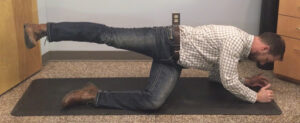
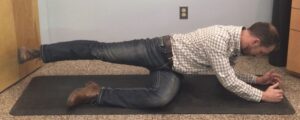
- Begin by laying on your side and bend the down hip and knee to 90 degrees. Keep the top leg straight. Place both elbows on the floor
- Push the lateral side of the bottom leg into the floor and lift the trunk off of the floor at the hips.
- Repeat 6-10X on each side
Baby Roll Over
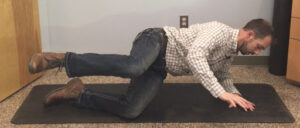
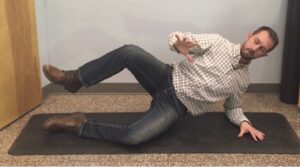
- Begin on your side with your elbow on the floor and your hip and knee bent to almost 90 degrees. Bridge the hips off of the floor and separate the top leg and top shoulder.
- Stabilize through the core by bracing your abdomen.
- Rotate slowly over towards the other side but do not touch the floor with the top arm or leg. Slowly return to the start position keeping the abdomen braced properly at all times.
- Repeat the rolling motion 4-8X.
Training Modifications
Besides using exercises to improve the predominant hip imbalance that causes IT band syndrome, modifying your training can be equally important. Here are some useful modifications that can be quickly employed to improve your condition.
- Perform a thorough warmup before any training to activate the stabilization system and increase hip capsule range of motion. A lack of a proper warmup is the most common mistake that I see with ITBS.
- Decrease overall training duration or resistance (hills) but increase pace. Fast-paced running is less likely to aggravate ITB problems when compared to slower “jogging’.
- Do not increase distance by more than 10% per week until a positive training path has been well established.
- Runners should minimize downhill running and avoid running on a banked surface like the crown of a road or indoor track. Running on a small circular track causes the inner leg’s ITB to work harder to prevent it from swinging medially. If track work is unavoidable, runners should reverse directions each mile.
- Athletes should avoid running on wet or icy surfaces as these require greater TFL activation for stabilization.
- Runners must avoid “crossover” gaits, which have been shown to aggravate iliotibial band problems.
- Cyclists may need to adjust seat height and avoid “toe-in” pedal positions.
- Patients should avoid; stair climbers, squats, and deadlifts when in pain. These exercises though can become helpful after the IT band inflammation has calmed down.
- Athletes should consider new training shoes, particularly if the current shoes have in excess of 300 miles or show signs of wear on the lateral heel.
Treatment options
Active Release Techniques is a well tested technique for improving IT band syndrome. This deep tissue technique is designed to improve the mechanics of the muscles surrounding the joint. For the ITBS patient improvement of function of the hip and knee are critical to resolving the pain and increasing athletic performance.
Acupuncture and/or dry needling is another successful treatment option for pain control. For some athletes modifying training is not an option. Acupuncture can be a powerful tool in helping to manage the pain of ITBS while safely training or rehabbing the painful knee.
You can find out more about these treatment techniques offered in our office on our website. We also have many other articles on running and hip injuries on the blog section of our website as well. Our office is committed to providing the tools and treatments necessary to help you become healthier than you have ever been.

Daryl C. Rich, D.C., C.S.C.S.

